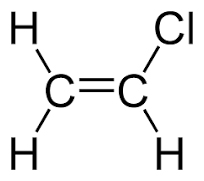Trichlorofluoroethane (Freon 113)
What is Trichlorofluoroethane (Freon 113)? Trichlorofluoroethane appears as a clear light colored liquid. Nearly odorless. Denser than water. Uses: cooling agent, cleansing agent for metal and electrical components, aerosol propellant, blowing agent for foam production, solventRead More
Trichlorofluoromethane (Freon 11)
What is Trichlorofluoromethane (Freon 11)? Trichlorofluoromethane appears as a clear light colored liquid. Nearly odorless. Denser than water. It is a halomethane and a chlorofluorocarbon.Read More
Trichloropropane
What is 1,2,3-Trichloropropane? 1,2,3-Trichloropropane is a synthetic chemical that is also known as allyl trichloride, glycerol trichlorohydrin, and trichlorohydrin. It is a colorless, heavy liquid with a sweet but strong odor. It evaporates very quickly and small amounts dissolve in water.Read More
Trimethylbenzene
What is Trimethylbenzene? Trimethylbenzene appears as a liquid. Flash point near 130°F. Less dense than water and insoluble in water. Trimethylbenzene has been used in fuels and fuel additives, intermediates, paint additives and coating additives, solvents for cleaning and degreasing, and solvents which become part of product formulation or mixture.Read More
Vinyl Chloride (VC)
Vinyl Chloride (VC)
What is VC?
Vinyl Chloride is an organochloride with the formula H2C=CHCl that is also called vinyl chloride monomer (VCM) or chloroethene. This colorless compound is an important industrial chemical chiefly used to produce the polymer polyvinyl chloride (PVC). About 13 billion kilograms are produced annually.
Uses
Most of the vinyl chloride produced in the United States is used to make polyvinyl chloride (PVC), a material used to manufacture a variety of plastic and vinyl products including pipes, wire and cable coatings, and packaging materials. Smaller amounts of vinyl chloride are used in furniture and automobile upholstery, wall coverings, housewares, and automotive parts. Vinyl chloride has been used in the past as a refrigerant.
Sources & Potential Exposure
Most vinyl chloride is used to make polyvinyl chloride (PVC) plastic and vinyl products. Acute (short-term) exposure to high levels of vinyl chloride in air has resulted in central nervous system effects (CNS), such as dizziness, drowsiness, and headaches in humans. Chronic (long-term) exposure to vinyl chloride through inhalation and oral exposure in humans has resulted in liver damage. Cancer is a major concern from exposure to vinyl chloride via inhalation, as vinyl chloride exposure has been shown to increase the risk of a rare form of liver cancer in humans.Vinyl chloride is a microbial degradation product of trichloroethylene in groundwater, and thus can be found in groundwater affected by trichloroethylene contamination.
Federal Regulations
EPA has classified vinyl chloride as a Group A, human carcinogen.

 Americas
Americas Europe
Europe Français
Français Deutsch
Deutsch Italiano
Italiano Español
Español

